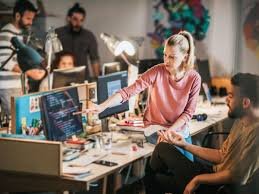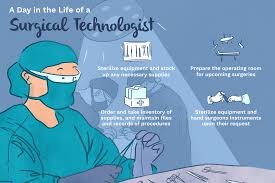
ai image generator
AI image generators are revolutionizing the way we create and visualize content. Whether for marketing, design, or personal use, these tools offer endless possibilities. By leveraging artificial intelligence, businesses and individuals can now generate high-quality images in mere seconds, enabling them to meet growing demands for creative assets with unprecedented ease and efficiency.
This article will explore the full potential of AI image generators, their applications, benefits, and how they are reshaping various industries. Let’s dive into this exciting realm of AI-powered creativity and unlock the capabilities these tools have to offer.
What is an AI Image Generator?
An AI image generator is a type of software or platform that uses advanced algorithms and deep learning models to produce images based on user input. These tools analyze large datasets of images to learn patterns, styles, and compositions, allowing them to generate visually appealing and contextually accurate images from text descriptions or other inputs.
The technology behind AI image generators stems from advancements in Generative Adversarial Networks (GANs) and diffusion models. GANs pit two neural networks against each other—a generator and a discriminator. The generator creates new images, while the discriminator tries to distinguish between real and AI-generated images. This continuous competition helps the generator improve over time. Diffusion models, on the other hand, generate images by progressively denoising random inputs, resulting in detailed and coherent images.
Applications of AI Image Generators
1. Marketing and Advertising
One of the most prominent uses of AI image generators is in marketing and advertising. Marketers can quickly create visuals for campaigns, product promotions, and social media content without needing a graphic designer. These tools allow for the customization of images to match brand guidelines, tone, and audience preferences. Additionally, AI image generators enable A/B testing by producing multiple image variations that can be tested for engagement metrics.
2. Design and Architecture
In the design and architecture sectors, AI image generators have become invaluable. Architects can generate visual concepts, interior designs, and landscape images based on client specifications. Designers can use these tools to brainstorm ideas and produce mockups for clients, saving time and resources.
3. Content Creation and Social Media
For content creators and influencers, AI image generators offer an efficient way to produce visually stunning content for social media platforms. The ability to create custom images with unique designs ensures that creators stand out in a crowded digital space. Whether it’s creating memes, artwork, or personalized graphics, these tools allow creators to produce high-quality visuals that resonate with their audience.
4. E-commerce and Product Visualization
E-commerce businesses are increasingly turning to AI image generators for product visualization. These tools enable the creation of realistic product images in various styles and settings, allowing businesses to showcase their products in diverse environments without needing costly photo shoots. Customers can see how products might look in different contexts, improving their shopping experience and increasing the likelihood of a purchase.
5. Gaming and Entertainment
In the gaming and entertainment industries, AI image generators play a critical role in concept art and character design. Game developers and filmmakers can use these tools to create environments, characters, and visual effects that enhance their storytelling. With the growing demand for immersive experiences, AI-generated images can help speed up production processes and bring creative visions to life.
Benefits of AI Image Generators
1. Speed and Efficiency
One of the biggest advantages of using an AI image generator is the speed at which it can produce high-quality images. Traditional methods of creating images, such as photography or manual design, can be time-consuming and resource-intensive. With AI, users can generate images in a fraction of the time, freeing up resources for other tasks.
2. Cost-Effectiveness
Hiring professional designers or photographers can be expensive, especially for small businesses or individuals. AI image generators offer an affordable alternative by automating the image creation process. This cost-effectiveness makes it accessible to a wider audience, from freelancers to large corporations.
3. Customization and Flexibility
Unlike stock images, AI-generated images can be tailored to specific needs. Users can input detailed descriptions, colors, and styles to create images that match their brand’s aesthetic. This level of customization ensures that visuals are unique and aligned with the overall message of a campaign or project.
4. Scalability
For companies with large content demands, such as e-commerce platforms or marketing agencies, the scalability of AI image generators is a significant advantage. These tools can produce vast amounts of images in a short period, making them ideal for businesses looking to expand their visual content libraries without overburdening their teams.
5. Innovation and Creativity
AI image generators push the boundaries of what’s possible in terms of creativity. By exploring different design patterns, styles, and elements, users can experiment with new ideas and concepts. The ability to generate images based on imaginative inputs fosters innovation, enabling users to think outside the box and produce visuals that are both artistic and functional.
Challenges and Considerations
While AI image generators offer many benefits, there are also challenges to consider. One of the primary concerns is the ethical use of AI-generated images. As these tools become more advanced, distinguishing between real and AI-generated content can be difficult, leading to potential misuse in areas like deepfakes and misinformation.
Another challenge is the quality of the generated images. While AI tools are improving, they are not always perfect. Some generated images may contain imperfections or lack the level of detail that a professional designer could achieve manually. However, as the technology advances, these issues are expected to diminish.
How AI Image Generators Are Transforming Industries
The impact of AI image generators is being felt across multiple industries, and their potential is still being realized. By automating the creative process, these tools are changing the way businesses and individuals approach design and visual content creation. Here’s a glimpse of how different industries are being transformed:
- Fashion: AI-generated images are being used to create virtual models and outfits, enabling designers to showcase collections without the need for physical prototypes.
- Healthcare: AI image generators assist in medical imaging, helping professionals visualize complex medical conditions and improving diagnostic accuracy.
- Education: Teachers and educators are using AI-generated images for creating custom visuals for presentations, educational materials, and virtual learning environments.
The Future of AI Image Generators
The future of AI image generator looks promising as the technology continues to evolve. We can expect to see even more sophisticated tools capable of generating hyper-realistic images that are indistinguishable from those created by human artists. Additionally, as more industries adopt these tools, the integration of AI-generated images into everyday workflows will become commonplace.
As AI image generation becomes more accessible and advanced, its role in shaping the future of creativity and design will continue to grow. The possibilities are limitless, and those who harness the power of AI in their creative processes will be well-positioned to thrive in a rapidly changing digital landscape.
Read More Articles:
10 Tips for Choosing the Right AI Trading Bot
10 Secrets to Unlocking the Power of AI
The Future of AI Technology: Unlocking New Horizons
How Does Advanced Artificial Intelligence Differ from Basic AI?







1 thought on “Unlocking the Power of AI Image Generator”